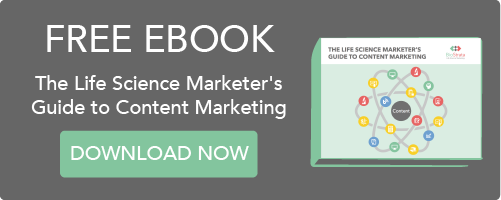Understanding the limits and constraints of our instruments is a fundamental part of scientific research. The margin of error contextualises results, increasing their value and guiding further research.
But to what extent should we consider the limits of our cognitive apparatus? We all have implicit biases to some degree, but can these actually affect how we observe and measure information in the world around us? As a marketer, you probably don’t wrestle with questions like these on a regular basis. But it’s not only an interesting thought to ponder in the shower – it can have very real implications for your marketing efforts and how they are received by your customers.
This kind of applied epistemology encroaches on the philosophy of science; more specifically, the theory-ladenness of observation. In this blog, we’ll briefly introduce the concept before delving into what it means for your content marketing strategy.
What is the theory-ladenness of observation?
Simply put, the theory-ladenness of observation involves a person’s preconceived theoretical understanding fundamentally affecting what they observe. While variants of this idea have been voiced by a few key figures in the latter half of the twentieth century, it was most notably put forward by Thomas Kuhn in his 1962 work The Structure of Scientific Revolutions. While introducing the concept of scientific paradigms, Kuhn gave the example of a swinging pendulum being observed by Galileo and an Aristotelian physicist. Because their respective theoretical understandings explain physical motion so differently, each would give a very different account of what they are looking at.
Another example is to think about the different ways a surgeon and an artist look at the human body. Despite looking at the same thing, one sees a complex network of biological processes while the other focuses on form, proportions and lighting. It’s worth noting that while the scope of theory-ladenness is vast, very few, if any, of its proponents have taken it to mean complete epistemic relativism; i.e. all scientific facts are relative to their paradigm and there is no objective, measurable reality. A more practical version, outlined in this research paper, holds that perception is theory-laden, but only strongly so when the perceptual evidence is ambiguous or degraded. For example, astronomical observations of distant galaxies are more likely to be influenced by previous theoretical knowledge than observations of what you had for breakfast.
This is all very interesting… but what’s this got to do with content marketing?
Great question, and thanks for keeping us on track.
To avoid unnecessary navel-gazing, let’s focus on two areas of scientific content marketing that show the most potential for theory-ladenness: content quality and marketing metrics.
What makes quality content?
Quality is largely considered to be purely subjective and, stripped of context, it largely is. But content in the world of content marketing has a very particular purpose – to speak to the needs and pain points of your personas in an engaging and informative way. With this in mind, high quality content can be considered any content that achieves those goals.
When writing for a specific persona, you need to put yourself in their shoes and imagine how their individual and professional knowledge base will influence how they react to your content. If your target persona is an overworked CEO of a young life science company, it’s probably not the best time to showcase your overwrought Byronic prose. They’re not even going to see your carefully crafted alliteration or breath-taking imagery; Instead, they’ll see a blog post that beats around the bush and fails at its sole purpose – to speak to a need and solve a problem.
How objective are your marketing results?
When a marketing strategy is poorly executed, it can be difficult to interpret the results – if there are results at all. Marketing as an industry has historically had a murky relationship with metrics and a clear-cut ROI, which leaves plenty of room for confirmation bias and subjective interpretation. As we saw above, the more ambiguous the data someone is working with, the more prone they are to be influenced by their preconceived notions. This can lead to a dangerously insular marketing strategy that fails to adapt and grow according to the changing needs of modern consumers and businesses.
This is where content marketing comes in. By applying a scientific, data-driven approach, a comprehensive content marketing strategy combines high-quality scientific content creation with measureable, quantitative results. Content marketing is a long-term strategy that’s ultimately shaped by consumption, sharing and lead generation metrics. And because it encourages collaboration and content from across your organisation – from sales to research and development – there’s minimal risk of anyone’s implicit biases going unchecked.
To learn more about the ins and outs of content marketing in the life science sector, download our free eBook, “A Life Science Marketer's Guide to Content Marketing”.




